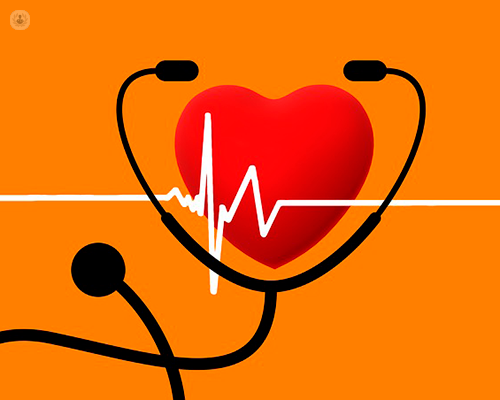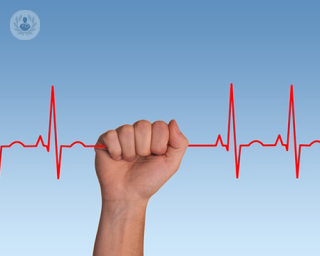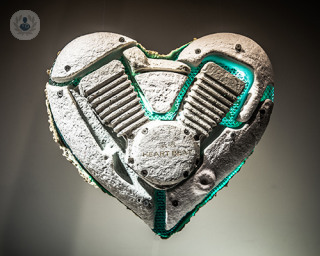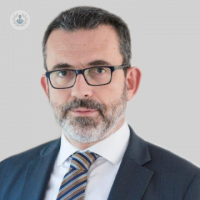Ventricular tachycardia
Dr Shui Hao Chin - Cardiology
Created on: 07-28-2015
Updated on: 04-18-2023
Edited by: Karolyn Judge
What is ventricular tachycardia?
Ventricular tachycardia (V-tach or VT) is a type of arrhythmia (heart rhythm disorder) in which abnormal electrical signals in the ventricles (the lower chambers of the heart) cause them to beat unusually quickly and out of sync with the contractions of the atria (upper chambers).
This acceleration and lack of coordination can mean that the chambers of the heart don’t have enough time to fill completely with blood before pumping it on, which results in not enough blood being pumped around the body, and therefore not enough oxygen. This can bring on a number of symptoms (see below).
Ventricular tachycardia can affect both people suffering from cardiac conditions and, more rarely, healthy people.

Is ventricular tachycardia dangerous?
In the most severe cases, ventricular tachycardia attacks can evolve into ventricular fibrillation, in which coordination between the ventricles is lost as they contact very rapidly. This can cause cardiac arrest, which is fatal if not treated immediately.
What are the symptoms of ventricular tachycardia?
The most common symptoms of ventricular tachycardia are:
- Dizziness/light-headedness
- Shortness of breath (dyspnoea)
- Palpitations
- Chest pain
- Anxiety
- Racing pulse
- Laboured breathing
- Loss of consciousness (syncope)
- Low blood pressure (hypotension)
How is ventricular tachycardia diagnosed?
The most common tests and examinations for ventricular tachycardia are:
- Electrocardiogram (ECG)
- Echocardiography
- Chest X-ray scan
- Coronary angiography
- Blood test to look at your troponin, potassium, magnesium, phosphate and calcium levels.
What causes ventricular tachycardia?
Ventricular tachycardia is caused by a problem with the electrical signals that control when the ventricles contract to pump blood. This can be affected by several things:
- Damage to the heart muscle and/or electrical pathways due to other heart conditions, e.g. coronary heart disease, cardiomyopathy, previous heart attacks, myocarditis, or congenital heart disease.
- Electrolyte imbalance
- Substance abuse, especially cocaine
- Certain medications
- Excessive caffeine intake
People who have diabetes or hypertension, those with a family history of cardiac conditions, and heavy smokers and drinkers all have a higher risk of suffering from ventricular tachycardia.
How can ventricular tachycardia be prevented?
You can reduce the risk of ventricular tachycardia by keeping secondary risk factors under control. There are some healthy habits you should adopt:
- Avoid smoking, an excessive consumption of alcoholic beverages and illegal drug abuse;
- Exercise regularly;
- Adopt a healthy diet, cutting down on red meat, fats and increasing your vegetable and fruit intake.
How is ventricular tachycardia treated?
If the patient has been suffering from ventricular tachycardia for some time or if it has worsened recently, an emergency treatment called electrical cardioversion is often used. Similar to defibrillation, it uses a timed electric shock to restore the heart rhythm to normal. If the patient suffers from cardiac arrest before their V-tach is treated, a defibrillator will be used to restart their heart.
Once the heart rate is under control, your doctor may recommend medication such as beta-blockers, calcium-channel blockers, and specialised antiarrhythmic drugs to keep it beating as normal. You should always consult a doctor before taking medication.
Future episodes may also be prevented with the following hospital treatments:
- Catheter ablation – a thin tube is passed through a blood vessel to the heart, where an electrode at the tip will use either heat, extreme cold, or radiofrequency energy to ablate (destroy) defective tissue or electrical pathways.
- Implantable cardioverter defibrillator (ICD) – a small device, which is implanted into the heart. It detects when the heart rhythm becomes abnormal and delivers a small shock to normalise it.
- Heart surgery – in rare cases, where the other options aren’t possible or haven’t worked, an operation may be necessary.
Which doctor should I talk to for ventricular tachycardia?
Should you think you’re at risk of ventricular tachycardia, you need to see a cardiologist (specifically an electrophysiologist specialising in heart rhythm disorders) to choose which tests and ventricular tachycardia treatments are the best options for you.








